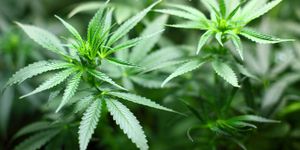Peatlands may soon become carbon sources
Amazonian peatlands have historically stored a large amount of soil organic carbon. But that might be changing. New research published in the Proceedings of the National Academy of Sciences recently suggests that before the turn of the century Amazonian peatlands could turn from a carbon sink to a carbon source. Carbon sinks refer to biomes that hold carbon (like forests, of the oceans) and thus keep carbon out of the atmosphere and limit warming. Carbon sources refer to biomes that produce carbon and admit it into the atmosphere.
Peatlands are the most efficient natural carbon sinks out there. If left alone, they are capable of holding more carbon dioxide than all other vegetation types on Earth combined. Also, the formation process of a peatland takes a really, really long time – meaning undisturbed peatlands hold carbon dioxide from thousands of years past.
"Global peatlands cover only about 3 percent of global land area, but hold around 30 percent of the earth's soil organic carbon," said Qianlai Zhuang, a professor of earth, atmospheric and planetary sciences at Purdue University. "Peatlands act like a 'terrestrial ocean' because of their sequestering carbon, but will this large amount of peat carbon be released under a warmer climate, causing further warming?"
Zhuang asks this question because of some of the characteristics of peatlands. As good as peat is at absorbing atmospheric carbon, if these ecosystems are drained and deforested (as they are more and more often), they can release almost 6% of global carbon dioxide emissions annually, according to Science Daily. Were all the peatlands that are sucking up carbon dioxide instead emit it, the world we live in would look a lot scarier.
Scientists from Purdue University investigated the chances of this happening in their new research. They explain how they used “a process-based peatland biogeochemistry model to quantify the carbon accumulation for peatland and non-peatland ecosystems in the Pastaza-Marañon foreland basin (PMFB) in the Peruvian Amazon from 12,000 y before present to AD 2100.”
Their results had two main findings: 1) higher temperatures result in more peat carbon loss, and 2) increased precipitation slightly enhances the build-up of peat carbon over long timescales. Future climate predictions suggest that we can anticipate both higher temperatures and increased precipitation in the Amazon. The scientists say that these two outcomes combined will ultimately increase carbon loss from peatlands to the atmosphere, meaning those carbon sinks may convert into carbon sources – and soon.
Sources: Science Daily, Proceedings of the National Academy of Sciences









